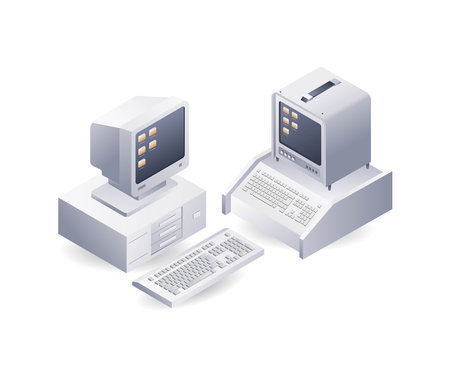1. Understanding Electronic Clutter in American Bedrooms
Modern American bedrooms are no longer just spaces for rest—theyve become hubs for technology and connectivity. From smartphones charging on nightstands to tablets tucked under pillows, electronic devices have found a permanent place in the bedroom. While these gadgets offer convenience and entertainment, they also introduce a new kind of clutter that goes beyond piles of clothes or stacks of books.
How Electronics Have Changed the Bedroom Space
In the past, bedrooms were designed as sanctuaries from daily life—a quiet retreat for relaxation and sleep. Today, the average bedroom might include:
- Multiple phone chargers and extension cords
- Laptops or tablets left on beds or desks
- Smart speakers or alarm clocks with screens
- Televisions mounted on walls or perched atop dressers
- Gaming consoles and related accessories
This shift has created unique forms of clutter that can impact both the physical space and the energy flow within the room, according to Feng Shui principles.
Common Types of Electronic Clutter in U.S. Bedrooms
| Device Type | Typical Location | Clutter Issues Created |
|---|---|---|
| Smartphones/Tablets | Nightstands, beds | Tangled cords, interrupted sleep patterns, over-stimulation |
| Laptops/Desktops | Desks, beds, floors | Cables everywhere, lack of workspace clarity, increased stress levels |
| TVs/Gaming Consoles | Dressers, walls, entertainment units | Bunched wires, visual distraction, reduced relaxation quality |
The Impact on Energy Flow and Well-being
From a Feng Shui perspective, excessive electronics can disrupt the natural energy (or “chi”) of a bedroom. This disruption may show up as restlessness, difficulty winding down at night, or even relationship tensions. Recognizing how these devices contribute to clutter is the first step toward creating a more peaceful and balanced environment in your tech-filled American bedroom.
Feng Shui Principles for a Balanced Tech Environment
When it comes to creating a peaceful and harmonious bedroom, Feng Shui offers time-tested wisdom that can be adapted to our modern, tech-filled lives in America. The goal is to foster a space that encourages relaxation, good sleep, and overall well-being—even with all our favorite devices nearby. Here’s how you can blend core Feng Shui concepts into your everyday routine without giving up the technology you love.
Understanding Key Feng Shui Concepts
At its heart, Feng Shui is about balancing energy (also known as “Chi”) so it flows smoothly through your living spaces. For bedrooms especially, this means creating an environment that supports restful sleep and positive vibes. Here are some essential principles:
- Clutter-Free Spaces: Clutter blocks the flow of Chi, leading to stress and poor rest. This includes digital clutter like tangled cords or piles of old devices.
- Yin and Yang Balance: Bedrooms should feel calm (Yin) but still have uplifting energy (Yang). Too many electronics can tilt the balance toward too much Yang, making it hard to relax.
- The Command Position: This means placing your bed where you can see the door but aren’t directly in line with it. It gives a sense of security and control—very important for good sleep!
Adapting Feng Shui for American Lifestyles
We all love our gadgets—whether its streaming your favorite show, reading on a tablet, or charging your phone overnight. The key is making these items work with you, not against you. Here are some simple ways to adapt traditional Feng Shui advice for modern American homes:
| Feng Shui Principle | Tech-Savvy Adaptation | Easy Tips for Your Bedroom |
|---|---|---|
| No Electronics Near the Bed | Limit device use right before sleep | Set up a charging station across the room; use “Do Not Disturb” mode at night |
| Declutter Regularly | Tidy up cords and unused gadgets weekly | Use cord organizers or baskets; recycle old tech items |
| Create a Calming Atmosphere | Add soft lighting and natural elements | Use dimmable lamps; decorate with plants or calming art alongside your devices |
| Balance Energy Flow | Avoid overloading one side of the room with electronics | Distribute tech evenly or keep most devices out of sight when not in use |
Making It Work: Small Changes, Big Impact
You don’t have to give up your electronics to enjoy the benefits of Feng Shui. Instead, focus on small adjustments that align with both tradition and today’s lifestyle. For example, keeping your phone away from your pillow helps reduce electromagnetic clutter and supports better sleep. Choosing calming colors for bedding and walls can offset the active energy of screens and devices. Even just turning off screens 30 minutes before bed makes a noticeable difference in how restful your nights feel.
Your Tech-Friendly, Zen Bedroom Starts Here!
By blending these easy-to-follow Feng Shui principles with American habits and preferences, you’ll create a bedroom that feels welcoming, balanced, and ready for sweet dreams—even in our always-connected world.
![]()
3. Practical Decluttering: Assessing and Managing Bedroom Electronics
Modern American bedrooms often double as entertainment hubs, home offices, and charging stations. This convenience can easily turn into electronic clutter, which Feng Shui suggests can disrupt restful energy. Here’s how you can assess and manage your bedroom electronics in a way that fits American lifestyles and habits.
Evaluate Your Tech Use
Start by taking a close look at the electronics in your bedroom. Ask yourself:
- Do I use this device daily?
- Does it help me relax or sleep?
- Can it be moved to another room?
Make a list of all devices and their main purposes. Here’s a simple way to organize your thoughts:
| Device | Main Use | Keep in Bedroom? |
|---|---|---|
| TV | Entertainment before bed | No/Yes (If yes, limit use) |
| Laptop | Work/Streaming | No (move to office/living area) |
| Smartphone | Alarm/Social media | Yes (but set boundaries) |
| Tablet | Reading/News | Maybe (consider alternatives like books) |
| Game Console | Gaming fun | No (encourage use outside bedroom) |
Minimize Unnecessary Devices
The key to good Feng Shui is keeping only what you truly need. Americans love their gadgets, but too many can overwhelm a space. Consider these tips:
- Create tech-free zones: Dedicate areas for relaxation with no screens.
- Set device curfews: Turn off or remove electronics an hour before bedtime.
- Use multipurpose devices: If your smartphone serves as an alarm, consider removing extra clocks or radios.
- Rotate gadgets seasonally: Store away devices you don’t use during certain months.
Cable and Gadget Organization Made Simple
Tangled cords and scattered chargers not only look messy but also block positive energy flow. Here are some easy ways to keep things tidy—American style:
- Cord organizers: Use Velcro ties or cable clips to bundle wires behind nightstands or under beds.
- Charging stations: Designate one spot for charging all devices, preferably away from your bed.
- Baskets or decorative boxes: Hide remotes, headphones, or game controllers in stylish containers that match your room décor.
- Shelving units: Place smart speakers or tablets on shelves instead of crowding bedside tables.
Your Personalized Action Plan Table
| Action Step | Description |
|---|---|
| List All Electronics | Create a quick inventory of everything plugged in or charging in your bedroom. |
| Select Essentials | Pare down to must-haves for sleep, health, or essential communication. |
| Tidy Up Cables | Bunch up loose cords using clips or boxes for a cleaner look and safer space. |
| Create Charging Zone | Add a tray or box for nightly charging—keep this area organized and out of sight if possible. |
| Set Boundaries | Create “no device” time slots before sleep to promote better rest and peace of mind. |
Tackling electronic clutter doesn’t mean giving up convenience; it just means being intentional about what stays in your sanctuary. With these practical steps tailored to American routines, you’ll create a bedroom that feels both modern and harmonious—with better Feng Shui energy all around.
4. Placement Matters: Best Practices for Electronic Device Arrangement
Why Placement is Important in Feng Shui
In Feng Shui, the position of your electronics can greatly impact your energy, sleep, and overall well-being. In many American bedrooms, TVs, phones, and smart devices are part of daily life. However, where you put them makes a big difference. Let’s explore how to arrange these gadgets for a more peaceful and harmonious space.
TVs: Keep Them Out or Covered
Ideally, TVs do not belong in the bedroom according to Feng Shui principles. They bring active energy that can disturb rest and relationships. If removing your TV isn’t an option, try these tips:
- Position: Place the TV as far from the bed as possible, preferably on a side wall rather than directly facing the bed.
- Cover Up: Use a cabinet or fabric cover to hide the screen when not in use. This helps minimize its energetic impact while you sleep.
Phones: Keep Distance at Night
Phones are essential for most Americans, but they emit electromagnetic fields (EMFs) that can disrupt sleep and energy flow. Here’s what you can do:
- Nighttime Storage: Place your phone at least 3 feet away from your bed. Avoid keeping it under your pillow or next to your head.
- Charging Location: Charge devices outside the bedroom if possible, or use a dedicated charging station on the opposite side of the room.
Smart Speakers & Voice Assistants: Mind Their Placement
Smart speakers like Alexa or Google Home are convenient but should be thoughtfully placed to avoid overstimulation and maintain privacy.
- Avoid Bedside Tables: Don’t place smart speakers right next to your bed. Instead, keep them on a shelf or desk across the room.
- Limit Quantity: Only keep necessary devices in the bedroom to reduce electronic clutter and maintain calm energy.
Laptops & Tablets: Store When Not in Use
Laptops and tablets are best stored out of sight after use. Designate a drawer or cabinet for these items so they don’t visually or energetically clutter your space.
Quick Reference Table for Electronic Device Placement
| Device | Recommended Placement | Feng Shui Tip |
|---|---|---|
| TV | Side wall, covered when not in use | Avoid direct view from bed; cover up at night |
| Phone | At least 3 feet from bed | No charging next to pillow; use Do Not Disturb mode overnight |
| Smart Speaker | Shelf/desk away from bed area | Avoid bedside placement; limit number of devices |
| Laptop/Tablet | Stored in drawer/cabinet after use | No visible electronics when sleeping; unplug if possible |
Create a Calm Tech Zone in Your Bedroom
The key takeaway is that thoughtful placement of electronics creates a calmer, healthier environment. Small changes—like moving your phone further away at night or covering your TV—can make a big difference in how restful and balanced your bedroom feels. By following these simple Feng Shui strategies tailored for American homes, you’ll enjoy better energy and more restful sleep.
5. Building Healthy Tech Habits for a Restful Space
Setting Boundaries with Technology
In the American lifestyle, technology is everywhere—even in our bedrooms. To keep your space calm and restful, it’s important to set boundaries with your devices. Start by deciding on limits for when and how you use electronics in your bedroom. For example, try turning off screens at least 30 minutes before bedtime to help your mind unwind.
Establishing Device-Free Zones
Creating device-free zones is a simple way to promote relaxation and better sleep. In Feng Shui, clutter—especially electronic clutter—can disrupt energy flow. Consider keeping the following areas free from tech:
| Device-Free Zone | Purpose |
|---|---|
| Nightstand | Encourages restful sleep, minimizes distractions |
| Bedside area (within arm’s reach) | Reduces temptation to check devices late at night |
| Dresser or vanity | Keeps beauty and self-care routines peaceful |
Culturally Relevant Routines for Americans
Building new habits can be easier when they fit into your daily life. Here are some suggestions that feel natural in an American household:
- Set up a family charging station in the living room or kitchen so all devices stay out of the bedroom at night.
- Create a “Tech Curfew”—for example, no phones after 9 p.m.—to encourage winding down together or alone.
- Replace screen time with relaxing activities like reading, journaling, or listening to soft music before bed.
Sample Device-Free Evening Routine
| Time | Activity |
|---|---|
| 8:30 p.m. | Plug in devices outside the bedroom |
| 8:45 p.m. | Take a warm shower or do light stretches |
| 9:00 p.m. | Read a book or write in a journal in bed |
Designing Your Bedroom for Well-Being
A peaceful bedroom supports good sleep and positive energy. Here are some quick tips:
- Avoid placing your bed directly across from the door or under windows, as this can disturb rest according to Feng Shui principles.
- Add soft lighting and calming colors (like blue or beige) to create a soothing atmosphere.
- If you must have electronics in your room, try to keep them stored away when not in use—use decorative boxes or drawers to reduce visual clutter.
With small changes and healthy tech boundaries, you can transform your bedroom into a sanctuary that supports both restful sleep and balanced energy every day.


